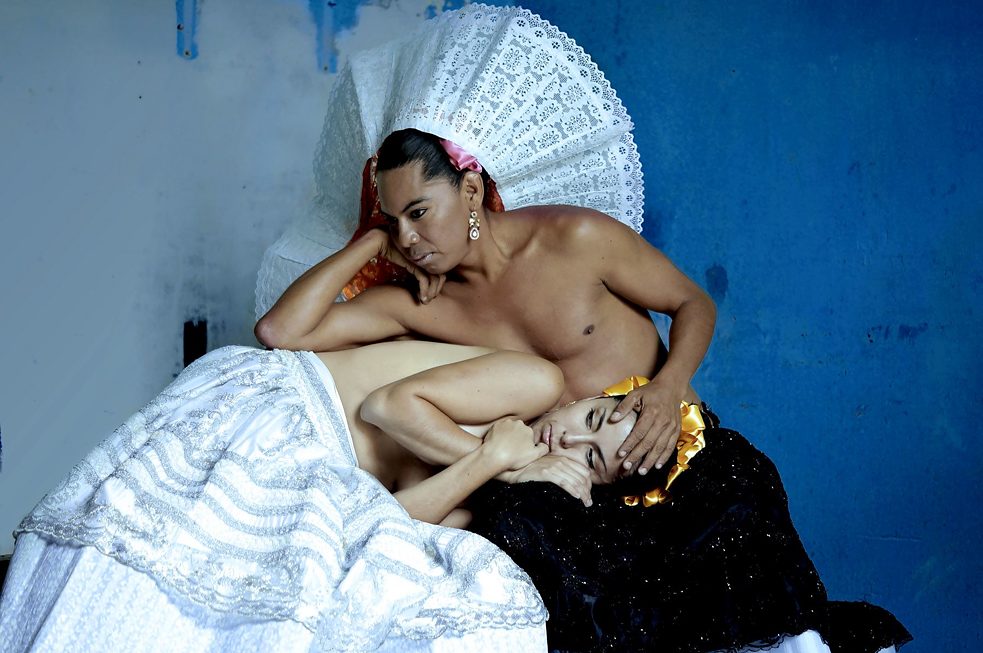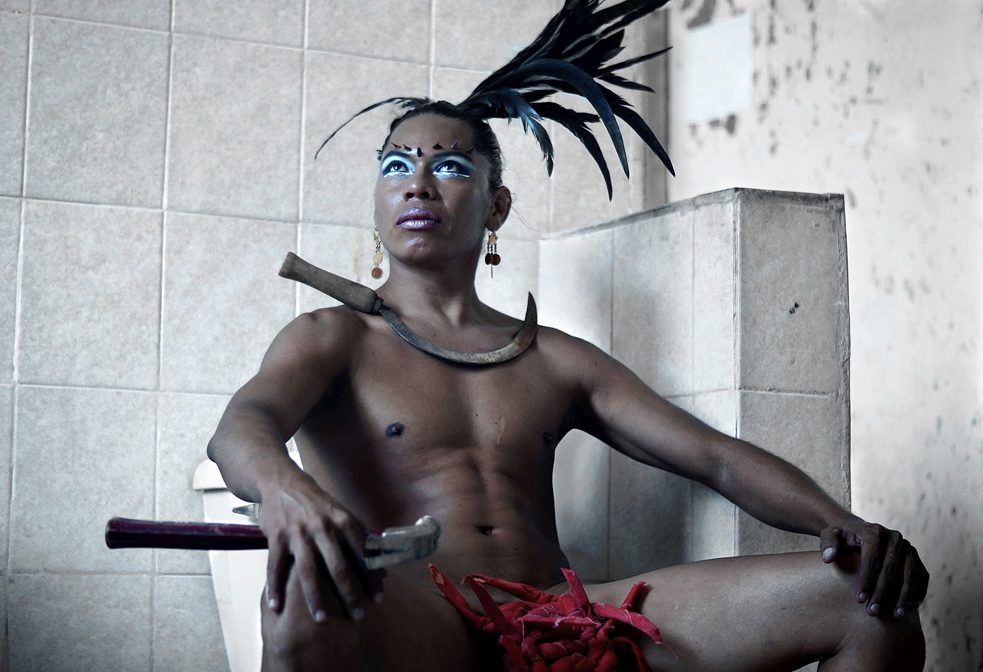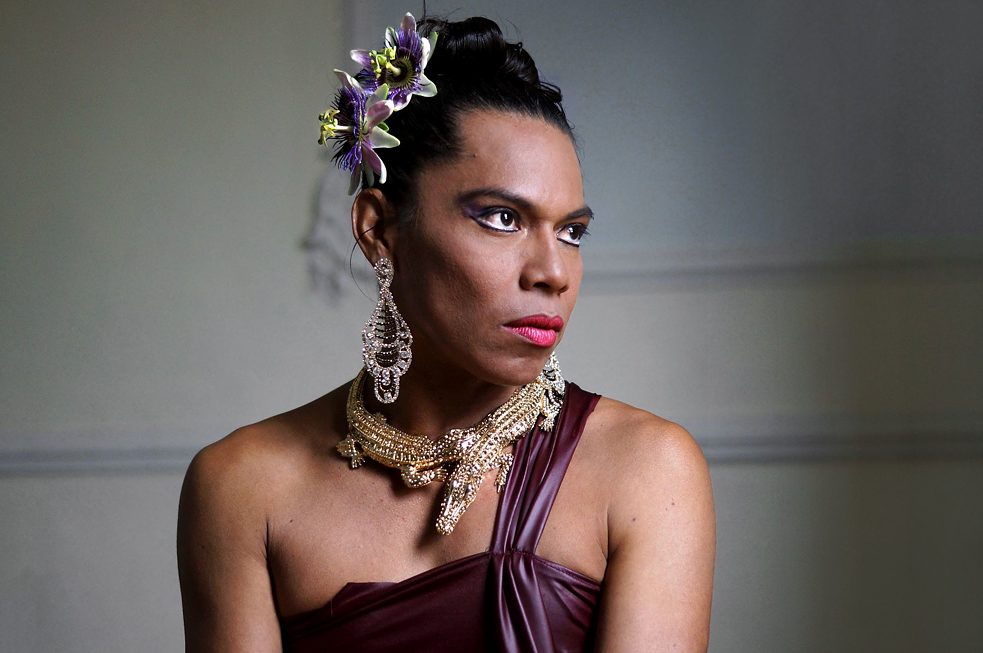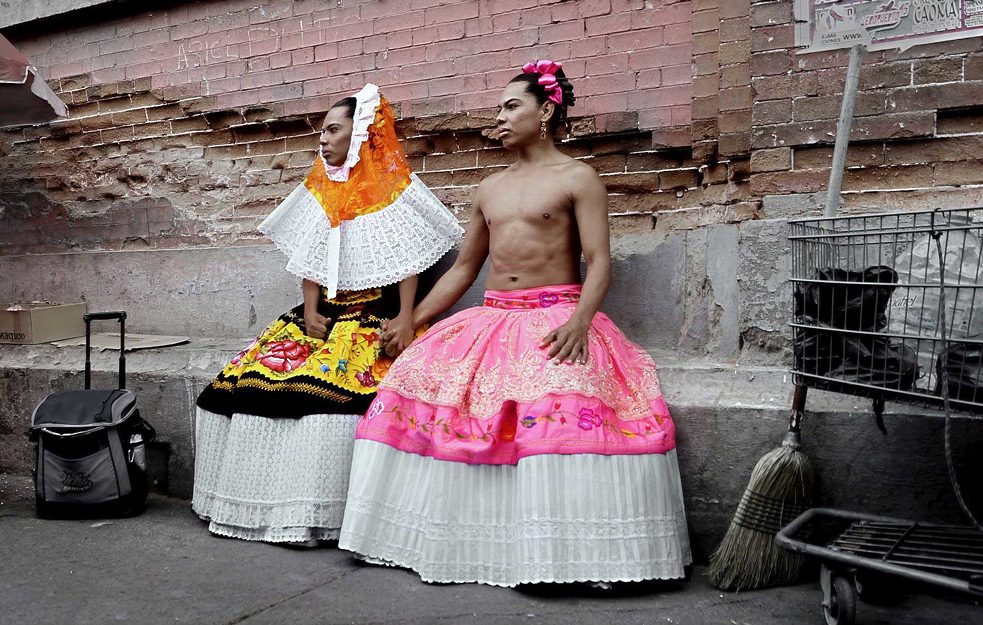Taking a look at muxeidad
Queer: No. Queer-po muxe: Yes
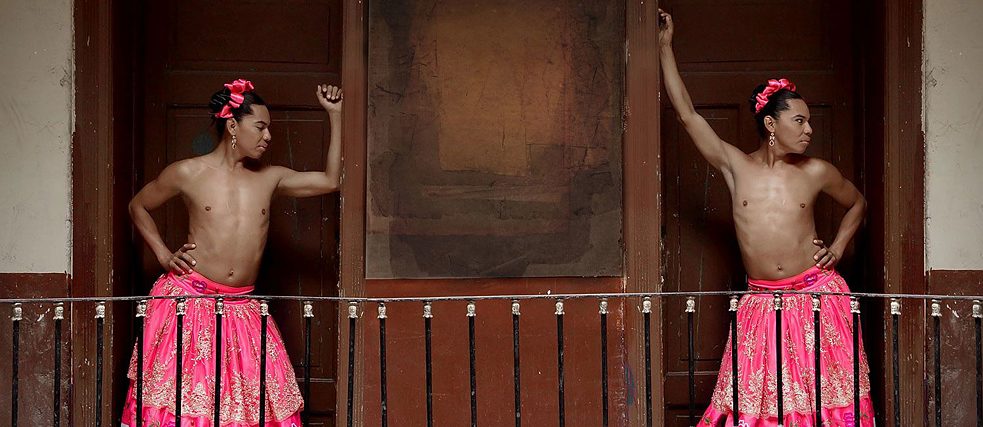
By Lukas Avendaño
When someone asks me about muxe identity or muxeidad (muxe-ness), their question invariably addresses whether this Zapotec cultural expression, lifestyle, or tradition can be considered specific to the inhabitants of Mexico’s Isthmus of Tehuantepec. People often verge on the presumptuous when they ask, “How long have muxes or muxeidad existed?” I always respond unhesitatingly: “I don’t know.”
All I have are vague intuitions, hypotheses, and speculations; nothing that could be presented as the “truth.” However, I do see this as a “criterion of truth”: as an undeniable, authentic phenomenon for the person who experiences it, with the possibility of being “falsifiable,” as this criterion originates in and emanates from one’s own life and experience.
The trigger for my own reflections on muxeidad came when I realized that the prior literature on the subject involves a lot of “falsifiability,” and that what it means to have a “muxe quality” within the context of the Isthmus of Tehuantepec contrasts dramatically with what it means to be muxe outside this region.No Istmo se é muxe, fora do Istmo, aos olhos do outro ou da outra, sou homossexual ou qualquer outra denominação semelhante.
Why does some local knowledge claim that muxe has existed or coexisted in zaa culture since ancient times? If you ask “How long have muxes existed?” some people will answer, “Ever since Adam and Eve ate the apple and got expelled from Paradise, the world has been twisted.”
Others will say, “When Saint Vicente Ferrer (1350-1419), the Dominican patron saint of Juchitán, was going around with a bag full of faggots and scattering them all over the world, the bag ripped, and they’ve been multiplying ever since.” And still others will simply say, “Who knows how long.”
The first two explanations of muxeidad claim that it started at a specific point in time. The very first one describes a version of Adam and Eve: muxe has existed ever since the world was twisted, so muxes have existed from the very beginning. But the word “twisted” makes them sound imperfect, marred by sin, rejected by God for disobedience!
The second explanation locates the origin of muxeidad in the sixteenth century, with Saint Vicente Ferrer. It’s worth mentioning that both accounts appeal to Christian stories and iconography, which in itself delegitimizes muxeidad as a genuinely zaa expression by granting it a Western temporality and situating it in a context that doesn’t exist in the zaa worldview.
However, the third explanation – “Who knows how long” – allows for the possibility that the “who” is anyone who can trace the existence of muxeidad back to a time before contact with peninsular culture. To understand this difference, I want to present two hypotheses.
Grazie
In the region of the Isthmus of Tehuantepec, in Zapotec communities or other communities with zaa heritage, you’ll often hear expressions like “Ni gracia contigo!” (“There’s no grace with you!”) as a form of disapproval. Or, “¡Pero gracia tiene!” (“They sure have grace!”) as a form of approval: to acknowledge someone’s talent for aesthetic forms like flower arranging, dancing, textile design, conversation, walking, makeup, telling jokes, etc.And this grace accompanies muxes as beings of grace, graceful people, people who have grace in them. It’s important to remember that orality is among the aesthetic expressions they perform: the act of speech itself should be performed with grace. They aren’t grace themselves, but the grace they carry inside them takes a concrete form.
Guenda
Discussing grace doesn’t fulfill the quest for vestiges that account for the existence of muxeidad before contact with the first evangelists (whether Dominica, Franciscan, or Augustinian), although this is the most common way to define muxes and their existence in the Spanish language.
Speakers of didxazaa (Zapotec) have a word that is replaced with the word gracia in Spanish. In didxazaa, the word is guenda: the “being”. All things – and all people – have their own guenda. Even words are endowed with guenda.
A few days or months after birth, babies often make faces or gestures that evoke laughter. When this happens, residents of the neighborhood of Santa Cruz Tagolaba, in Tehuantepec, ask adults to look away and to cover the baby with a handkerchief—“so their guenda (little angel) won’t get stolen.” Could this be a translation of the Mesoamerican terms nagual and tonal?The adults in this neighborhood say that every human being has a guenda at birth. This guenda is defined as a creative gift, whether in the form of manual trades or aesthetic practices like singing or playing an instrument. But if an adult sees the newborn making gestures, its “little angel” can get stolen, because what the newborn is doing with their gestures is “chatting” with their guenda.
And if the newborn’s guenda is stolen, then they won’t be able to fulfill their creative destiny as an adult.
While the guenda helps us understand why being “muxe” is associated with grace, it’s important to conduct a “long-term” exercise, in the sense of Fernand Braudel’s longue durée. According to Braudel, “mentalities” are the slowest aspect of societies to change, because they are traversed and affected by circumstance, occurrences, and the longue durée. My point, then, is that both guenda and grace can be explained in terms of the longue durée, although we must first look at specific occurrences/circumstances.
More than sexuality
It is essential that we all recognize ourselves as sexed beings, as beings for whom sexuality and erotization are a constant, like mating birds and insects. All of existence recognizes the male, the female, and the pansy. When children play mom and dad, they often also act out a simulation of coitus between men, or play games that involve touching each other’s buttocks, penis, or nipples; the custom of urinating together is another example.
Moreover, sexuality and eroticism can’t be understood separately – muxes and men – but must be treated as a question of community.
And so I propose that we stop talking about the muxe in singular or plural and talk instead about muxeidad as a “total social fact.”
This condition also entails addressing the baalana – the ritual that celebrates “deflowering” – and women’s virginity. In this ritual, the “stolen” or “abducted” woman must “legitimize” herself as a virgin, showing bloodstains as proof of her “deflowering.” Then the festivities begin: red flowers, red confetti, and red wine and sodas for all the neighbors.
As part of this event, the “boyfriend’s” committee of family and friends try to appease the bride’s mother, who is offended by the abduction of her daughter. Participants always bring red gifts. Then the mother may feel “proud,” because she attended to her daughter’s virginity – which means, in turn, that her daughter and family have been honored by her “deflowering.”
As a result, the mother may set the terms of the wedding, “because her daughter has value.” If the groom’s family acts with any scorn or slight, the mother of the deflowered woman may demand, insulted, “What, isn’t my daughter valuable?”By contrast, there is no virginity ritual for men. They are free to engage in sexual activity with other men, as well as with nanny goats, sheep, sows, even hens! They can also sleep with muxes or with “the women from the corner bar.”
A third gender?
If we look at the whole range of identities, being muxe is different from someone who simulates “being female” (transvestites, transgendered, transsexuals). Muxes simply touch up their identity, adding certain signs considered “non-masculine”: painting their nails, wearing thong sandals or “women’s” shoes, curling their eyelashes, using eyeliner, pulling back their hair with clips, and wearing earrings. All still while wearing pants.“Traditional” muxes keep wearing pants: if they opt for feminine clothing, they do so as part of everyday life, in both public and private spaces. This is the case of Martha Medina in San Blas Atempa, who sells beer in a cantina and always wears their enagua and refajo corto, gold earrings, and plastic clips to draw back their sparse hair, not entirely covering over their bald spot. In this way, they honor tradition.
Syncretic muxes can be described as “honoring” tradition by wearing traditional women’s garments and staying on the margins of traditional feminine spaces. Once they have exited the roles of tradition, however, they adopt Western “feminine wear”: dresses, skirts, miniskirts, low necklines, heavy makeup, high heels, and even hair dye.Muxeidad in the society of Oaxaca
It’s difficult to treat the question of whether muxe constitutes a third gender as a simple yes-or-no question. We must remember that muxe exists as a “total social event” – which is why it’s more appropriate to talk about muxeidad than the muxes as such. We must consider many other factors that don’t only involve muxe life, but also masculinities, femininity, “deflowering” as a rite of passage, eroticism, and the sensuality of life in the broadest possible sense.
For example, it goes without saying that if you’re a muxe, your sexual practices mean you are always the one being penetrated. And the one who does the penetrating isn’t another muxe, but rather a “man in every sense of the word.” The sexual/gender identity of this “man” never changes; his sexuality is never questioned or challenged. Which means he isn’t recognized as muxe, as bisexual, or as anything else. This man’s exercise of his sexuality is yet another practice he is permitted by virtue of being a “man” to begin with.
After all, once you’re outside the community, you’re no longer a muxe: you’re just another fag, a pervert, a degenerate.
The collectivity is what enunciates you, what makes you visible. The collectivity names you, grants you a real or symbolic existence, and endows you with your social, economic, or symbolic capital – which is then re-capitalized inasmuch as you find yourself inserted into the cultural practices of that community, fulfilling its commitments, participating in its internal dynamics. And so we must stress that this “third gender” is construed only through everyday participation in all spheres, both public and private. Which is what community means!
It’s important to remember that the internal logics of the Zapotec isthmus community would seem to declare their own immorality before the Westernized moral code that governs the rest of Mexican society. In the eyes of the dxu – the others, the outsiders who have managed to live in “native skin” – we muxes are a matriarchal, zoophilic, pedophilic, barbarian culture, because we slaughter bulls, goats, and pigs; we decapitate hens; we celebrate and exhibit the blood of virgins’ torn hymens; and we are clearly permissive and tolerant toward homosexuals.
how to think gender differently
According to capitalist logic, the only way to live is by competing, by comparing yourself to others, by chasing the carrot. And because capitalism doesn’t see tradition as a value to be exchanged or used for profit, it doesn’t see tradition as a commodity with any capital gain – unless in the form of “pueblos mágicos” (magical towns), a state certification that hasn’t been granted to any towns on the Isthmus of Tehuantepec. And so our traditions are out of the running, because no muxe would claim to be the best reciter-of-prayers in the neighborhood, or the best saint- or virgin-decorator for the village festivities. They only aspire to the instinctive/empirical gestures that reflect their guenda, their grace. “Being muxe” means the vocation of service to the community.Discussing muxe expressions beyond the Oaxacan context risks making them into the tip of the iceberg of the market, into virtual cultural goods: as commodities with no social basis, with no community fabric to support them and give them form. In this way, as signs that are incomprehensible to the market, they grow ambiguous in their polysemy.
But does this decontextualized manifestation of muxe culture truly create community and collectivity? Does it strengthen the social makeup that originates and configures it? Or is it a queer strategy to break into the hegemonic subjectivities of their respective contexts? Or is it a virtual carnival?All of these aims can emerge. But the guenda isn’t a goal. That is, when it comes to people with the “gift”/guenda, if they direct it toward a particular ambition, they can lose it: the guenda abandons you. The bigger the desire to be better, the greater the estrangement from the “gift.”
This manifestation of offering oneself to help, to serve, is what grants the muxe respect, social recognition, prestige, their place in the social structure.
In fact, I would say that the best person isn’t moved by the desire to be the best: they’re moved by their guenda, as grace moves them to serve, to fulfill their commitment, to keep their promise. Hence the spirit of detachment, of the offering, of sharing their real or symbolic goods, of accumulating in order to distribute and use, like the potlatch among the Wakiut.
This manifestation of offering oneself to help, to serve, is what grants the muxe respect, social recognition, prestige, their place in the social structure – because all of this is inherent to their personality and their condition. “Because that’s how they are!” Because they have guenda/grace, not because they’re the best.
Please read this text as my contribution to a less simplistic understanding of muxe experience in the outside world, highlighting the impossibility of discussing muxeidad without the involvement of other institutions, such as the baalana, femininity, and masculinities. This is why I sometimes joke that a muxe is like King Midas, except that unlike Midas, who turned whatever he touched to gold, muxes muxeify everything (everyone) they interact with.
In sum, muxeidad is:
A way of life circumscribed to a geographic region on the Isthmus of Tehuantepec, in the state of Oaxaca, within the societies defined by a Zapotec “ethnic style.”Muxeidad involves people who are born with a “penis and testicles,” and who live their everyday lives enacting cultural roles considered “non-masculine roles, functions, aesthetics, and preferences.”
Muxeidad is a poetics of life and a less orthodox subjectivity that acknowledges and experiences bodies at variance from the scrupulous gaze of heteronormativity.
Muxeidad is a rampant economy that generates enough surplus to provide for the household, is generous with nieces and nephews and parents, and is practiced through the guelaguetza, the guendaliza, communal labor, the collectivity, etc.
Muxeidad is an aesthetic reflected in the form and means of adorning festive spaces.
Muxeidad is a frank, open, and deliberate way to question and expose the falsehood of certain patriarchal enunciations as “standards of truth.”
Muxeidad is the tip of the iceberg of a lifelong practice understood in terms of Fernand Braudel’s longue durée.
Muxeidad is a bastion of protection for syncretic faith and the nakedness of saints and virgins.
Muxeidad is the hand that mothers and fathers lean on for support in their old age.
Muxeidad is intercourse and fellatio between “men” as the river’s current conceals the naked.
Muxeidad is a way to safeguard the integrity of female virginity.
Muxeidad is a way to be initiated into and to discover one’s sexuality without fear, shame, remorse, or preconceived sinfulness.
Muxeidad is the ways in which men begin their sexual lives with muxes.
Muxeidad is the rupture of the Judeo-Christian paradigm of sexuality, the private property of the body, the heteronormative family, and monogamy.
Muxeidad is a way to contradict Leviticus 20:13.
Muxeidad is a possible way to fall in love and find happiness, even if the muxe only comes to visit.
Muxeidad means fantasizing that you’re loved as the muxe kisses you with alcohol on their breathe and tobacco on their tongue.
Muxeidad means being financially self-sufficient and having a bed that’s occasionally warmed by a casual lover.
Muxeidad means choreographing the quinceañera parties for the neighborhood girls.
Muxeidad means getting trained to be the alpha male, even if “silverback” is a shade of nail polish and “chest hair” is the feathers or extensions on their head.
Muxeidad is a Mesoamerican pot that didn’t become a museum piece.
Muxeidad is a codex saved from the eternal flames of hell.
Muxeidad is a polysemic signifier.
Muxeidad is an alphabet and muxe is a phoneme.
Muxeidad is a lattice of signs and symbols.
Muxeidad is an “ethnic style.”
Muxeidad is a collectivity’s way of recognizing values, forms, and rhythms.
Muxeidad, beyond the Isthmus of Tehuantepec, is “polygamy,” “incest,” “statutory rape,” an irrational condition, superstition, beliefs, tricks, idolatry, sodomy, and an abominable sin that inhabits a vile homosexual body with venomous rancor.

